Description
Borsali or Morsali design is inspired from the fruit of borsali tree which is in Sanskrit known as Maulshree and in southern part of India it is called as Bakula tree. The shape of the design is inspired from the inside structure of fruit of Borsali tree. It is also called “Bhindi” (Ladyfinger) design sometimes because of its design looks similar to it.
This design was originally used to print on cotton odhini (dupatta) for tribal of west Madhya Pradesh. It is locally called as borsali or morsali odhini.
The fruits of maulshree tree is edible and sticks are used in brushing the teeth to fight with pyorrhea and bleeding teeth.
Syahi-Begar Print
Traditional hand block printing is practiced in very few places in India. Ummedpura-Tarapur twin villages of Madhya Pradesh continuing the traditional craft of hand block printing once famous for Nandna technique of block printing.
“Syahi-Begar” technique of block printing is a kind of mordant (color binder) block printing in which two mordants alum is used to get red with alizarin and iron rust is used to get black color when printed on myrabalan (Harad fruit) dyed base. “Syahi” word is used for black color and “Begar” is used for red color.
For red color first alum as mordant is printed mixing with tamarind seed powder paste and then dyed with alizarin. Now a day synthetic alizarin is used unlike 50 years ago roots of morinda tinctoria or madder roots were used. To get black colour first iron rust mix with water and jiggery fermented for 15 to 20 days. Then it is mixed with tamarind seed powder and print using wooden block on myrabalan (Harad fruit) dyed base.
Tarapur is a very small village situated on the banks of “Ghambhiri” river having population of 2500 to 3000. Tarapur is 270 kilometers away from Indore the industrial capital of Madhya Pradesh.
“Chippa” community is practicing the craft of hand block printing in Tarapur since 400 years, who claims following the lineage of Sant Namdev, a famous saint of “Bhakti Tradition” in India. 20 years back some 100 families of “Chippa community” were involved in this craft limited to the 2 families today. It’s all due to tough competition from the chemical screen printing and imitating of designs by digital printers selling it at cheaper prices than hand block printing.

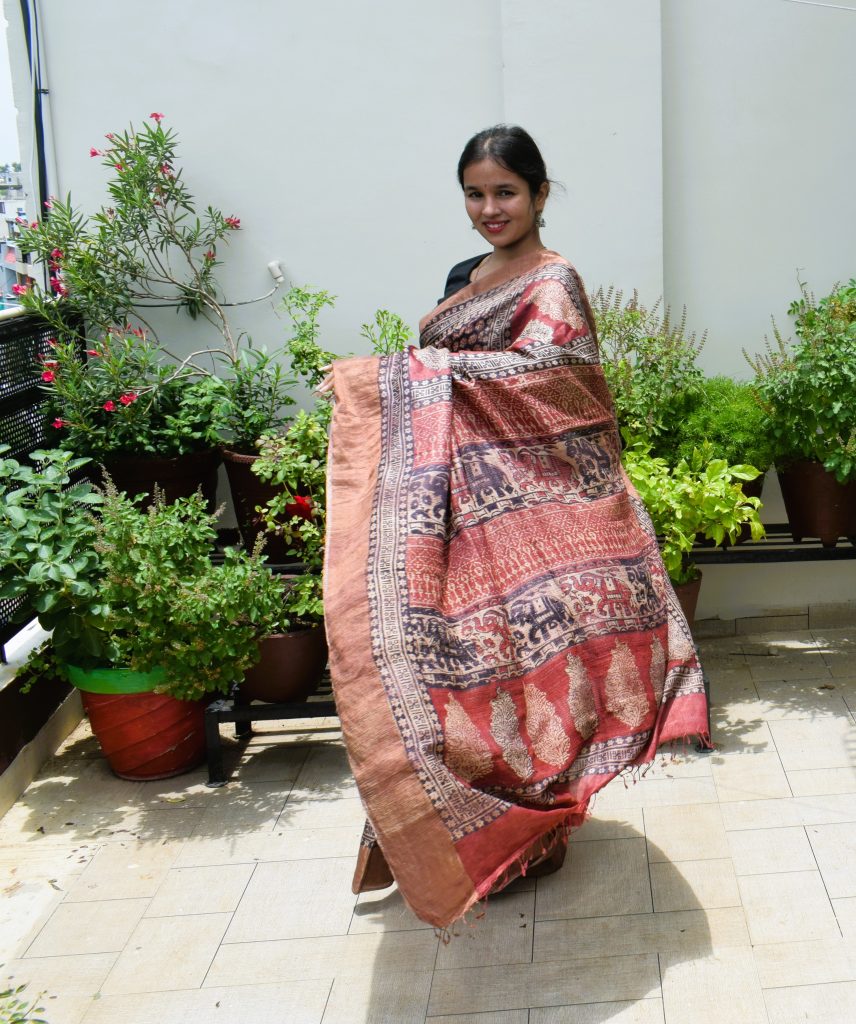
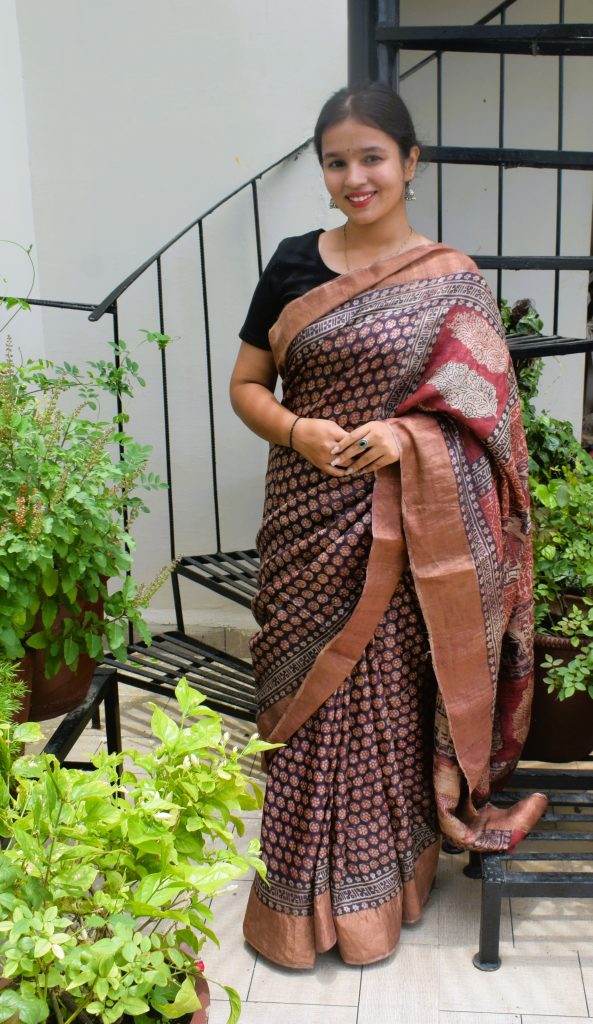
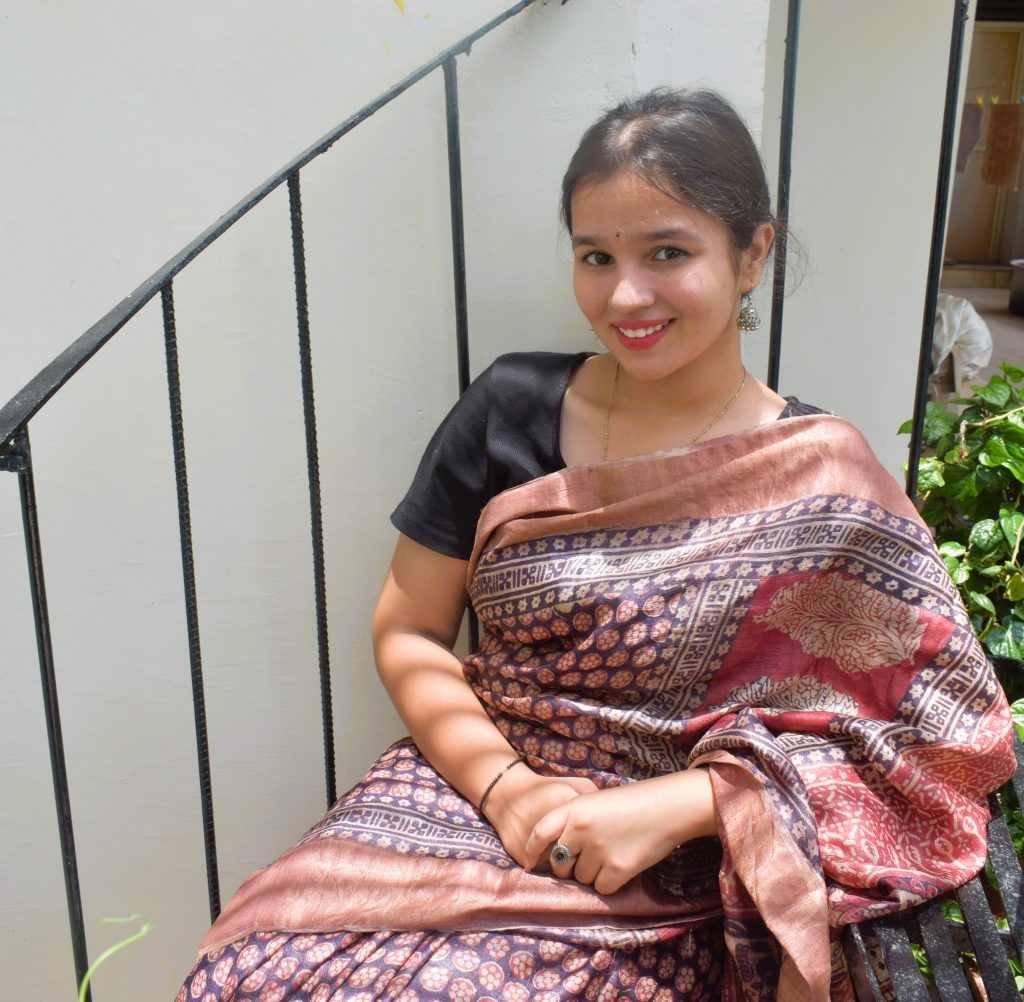
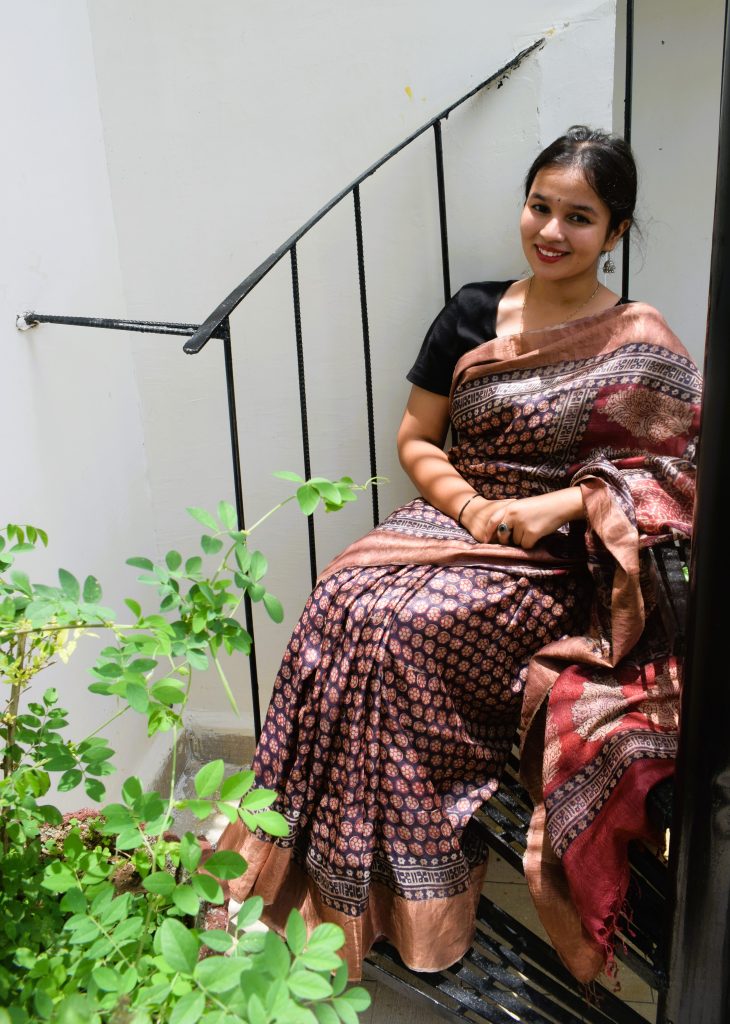


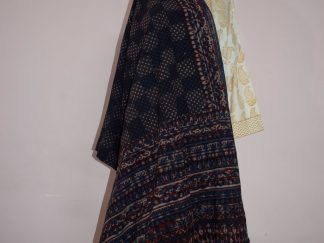
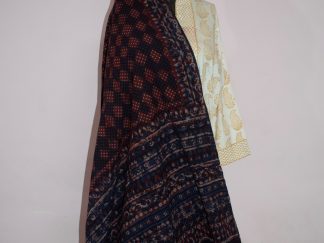

Reviews
There are no reviews yet.